BY: PAMELA SCHAEFFER, PhD
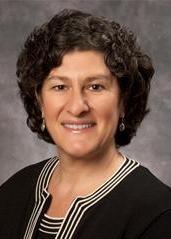
By the second decade of the 21st century, government and market forces once again were driving mergers, buyouts and joint ventures among hospitals and health care systems. The overarching vision under provisions of the Patient Protection and Affordable Care Act was both vertical and horizontal integration aimed at three goals: tighter clinical integration in order to reduce duplication and cost; wider availability of preventive and outpatient care; and stronger links along the continuum of care for better oversight of patients moving from acute care to rehabilitation, long-term care facilities or home. More often than in the past, the new alliances involved mergers between Catholic and other-than-Catholic organizations.
"Mergers, affiliations, strategic alliances and clinical integration have become common parlance," wrote Sr. Mary Haddad, RSM, CHA's senior director of sponsor services, in the July-August 2013 issue of Health Progress. "No one wants to be left behind."
The new environment was rife not only with opportunities and challenges, but also with cautionary concerns. The key strategy for the future of Catholic health care was finding ways to keep the ministry viable while maintaining Catholic identity amid so much change. Fr. Francis G.
Morrisey, OMI, a canon lawyer deeply familiar with Catholic health care, noted the fine line between a rigid, defensive stance and slipping into secularism, both of which risk the future of Catholic health care and the loss to society of its Gospel-driven vision. Morrisey laid out his concerns in a major address at a CHA Sponsorship Institute in 2013, subsequently published in the July-August 2013 issue of Health Progress.
The concerns were not limited to Catholic health care in the U.S. In a homily on June 12, 2013, Pope Francis counseled a middle ground for Catholics facing difficult decisions in changing times. He described the narrow ridge that those who seek the will of God must walk — a path that cuts between a "fear of freedom," amounting to a denial of the Spirit, and a facile cultural adaptation that smacks of "adolescent progressivism." At this time in the history of the church, "we cannot go backwards or go off the track," Pope Francis said.
Another key question many were asking had to do with the phenomenon of growth: How big is big enough to ensure survival of non-profit health care systems?
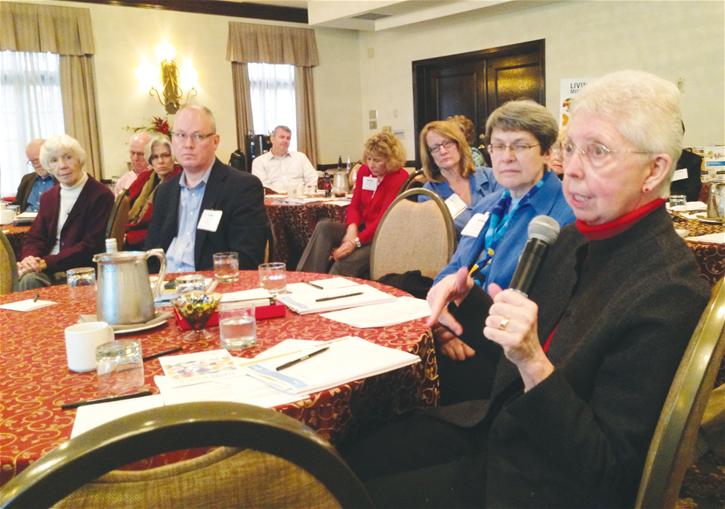
NEW DEMANDS ON LEADERS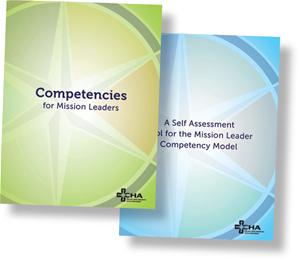 As Catholic health care systems grew ever larger, more complex and diverse, the demands on their leaders grew apace, and with that, a need for extended formation. The new environment called for leaders at every level of organizations to continually upgrade their knowledge, deepen their spirituality and expand their skills. In addition to ongoing educational forums for mission leaders, ethicists, sponsors, physicians and others, CHA invited members to participate in surveys and task forces aimed at assessing what kinds of competencies and formation efforts would best serve the ministry in the years ahead.
As Catholic health care systems grew ever larger, more complex and diverse, the demands on their leaders grew apace, and with that, a need for extended formation. The new environment called for leaders at every level of organizations to continually upgrade their knowledge, deepen their spirituality and expand their skills. In addition to ongoing educational forums for mission leaders, ethicists, sponsors, physicians and others, CHA invited members to participate in surveys and task forces aimed at assessing what kinds of competencies and formation efforts would best serve the ministry in the years ahead.
In 2008, for instance, CHA invited member organizations to participate in a collaborative, interactive process to explore what the mission leader's role would entail for the foreseeable future. The result was a vision of a redefined role for mission leaders, published in 2009 and made available to members online as "Competencies for Mission Leaders." There was a growing consensus that the mission leader's role had evolved beyond staff education to one calling for a high level of leadership and managerial ability. It became increasingly clear that the mission leader was an indispensable member of an organization's leadership team, with responsibility to contribute to decisions at the highest levels.
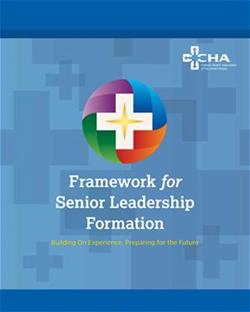
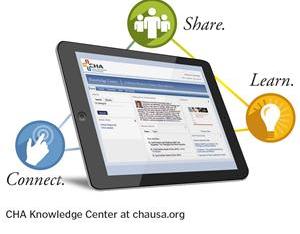
At the same time, CHA studies showed that both ethicists and mission leaders were aging groups, necessitating stronger recruitment efforts and better definitions of requirements for becoming professionals in their fields. In response, CHA developed materials to encourage graduate students in theology and ethics to consider a career in Catholic health care.
In 2011, CHA's mission department developed Framework for Leadership Formation: Building on Experience, Preparing for the Future. The project grew out of a two-year process to identify best practices in leadership formation and to extract tools for health care leaders at every level, including sponsors, trustees, chief executives and mission leaders. As follow-up to the process, CHA in 2014, in conjunction with the Center for Applied Research in the Apostolate (CARA) at Georgetown University, designed and distributed a survey of senior leaders to determine the impact of participation in various formation programs. Although participation and program content garnered almost universally positive responses, the survey showed that more research is needed to assess the integration of that learning into participants' personal and professional lives.
As another response to changing times and diverse learning styles, CHA upgraded its website to include more video and expanded its informational services by adding both online and e-learning components.
Recognizing the need for leadership succession in Catholic health care, CHA, at its 2011 Catholic Health Assembly, launched Tomorrow's Leaders, an annual program to honor men and women who have demonstrated strong leadership skills and a passionate commitment to the ministry early in their careers.
Also in 2011, CHA convened a sponsorship task force to determine how best to help prepare sponsors in light of the many new models of sponsorship. As a result of that work, in May 2013, CHA announced a new, intensive sponsor formation program that would bring together Catholic health care sponsors and potential sponsors for four weekends over 18 months that would begin in the fall of 2015. The program, composed of presentations, personal reflections and interactive group work, is built on previously successful models.
COMMUNITY BENEFIT AND THE IRS
Although Catholic hospitals were noted for a long tradition of providing charity care and community benefits, with a 20-year history of public accountability for these activities, a new tax form drafted in 2007 and activated in 2008 marked the first time that nonprofit hospitals would have to give detailed public accounting of these activities. Also in 2007 the Internal Revenue Service rolled out a major redesign of its Form 990 for nonprofit organizations, adding a new section for nonprofit hospitals, called Schedule H.
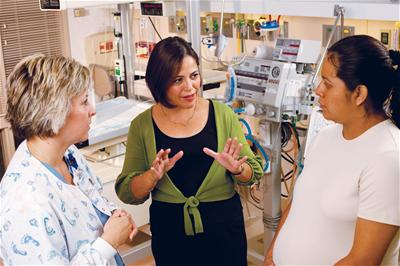
The Schedule H was prompted by an impetus on the part of the IRS to better understand the nonprofit hospital sector in light of evolution of large multistate systems. Another goal was to achieve greater transparency through consistently reported information — much of it modeled after CHA's early accounting forms. This would better define community benefit and separate the cost of true charity care from bad debt and separate true community benefit from marketing activities.
With input from CHA, the American Hospital Association and other professional organizations, the IRS made significant changes to the draft form and its instructions before publishing a first mandated Schedule H in 2008. The Schedule H, which nonprofit hospitals were required to file beginning in 2009, asks for information in such areas as financial assistance policies, community benefit and community building activities and expenses, and policies for informing patients about eligibility for government programs such as Medicare or Medicaid.
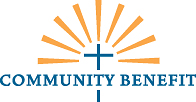 CHA provided members a continual stream of information to assist them with the challenges of preparing for and fulfilling the IRS's rigorous reporting requirements. A Guide for Planning and Reporting Community Benefit, a resource CHA had developed for members in the mid-2000s, was updated in 2008. It was updated again in 2012 and once more in 2015 to reflect tax exemption requirements of the Affordable Care Act. These included a requirement for hospitals to conduct a community needs assessment at least every three years and adopt an implementation strategy to meet the community health needs identified by that assessment.
CHA provided members a continual stream of information to assist them with the challenges of preparing for and fulfilling the IRS's rigorous reporting requirements. A Guide for Planning and Reporting Community Benefit, a resource CHA had developed for members in the mid-2000s, was updated in 2008. It was updated again in 2012 and once more in 2015 to reflect tax exemption requirements of the Affordable Care Act. These included a requirement for hospitals to conduct a community needs assessment at least every three years and adopt an implementation strategy to meet the community health needs identified by that assessment.
Schedule H and its instructions are revised each year. CHA's recommendation that activities aimed at addressing social and environmental determinants of health be allowed as community benefit recently has been incorporated. At the time of CHA's 100th anniversary, the Schedule H has become a resource for community members, policymakers, researchers and others interested in the charitable contribution of hospitals.
DEVELOPMENTS IN ETHICS
Decisions and care at the end of life continued to occupy CHA ethicists, especially in light of the change to Directive 58 in the fifth edition of the Ethical and Religious Directives for Catholic Health Care Services. Opponents of Catholic health care intensified their efforts to prevent mergers by means of lawsuits and negative public campaigns. They wrongly told the public that Directive 58 compelled Catholic health care facilities to force feeding tubes on patients at end of life, even against their wishes, and contended, again wrongly, that joint ventures with Catholic organizations would deprive women of good reproductive care.
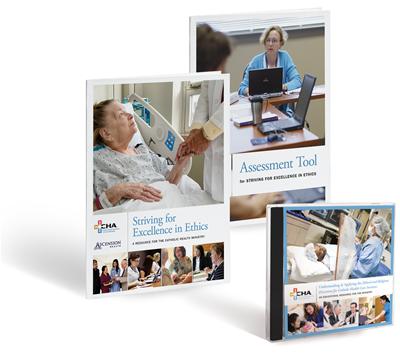 As a way of better ensuring that a person's wishes for end-of-life care be honored, CHA kept members informed of a document known as POLST — Physician Orders for Life-Sustaining Treatment. Though POLST had its detractors, it also had many proponents, including CHA ethicists, who argued that the document ensures beneficial communication between patient and physician in a way that other forms of advance directives, including durable power of attorney for health care, may not.
As a way of better ensuring that a person's wishes for end-of-life care be honored, CHA kept members informed of a document known as POLST — Physician Orders for Life-Sustaining Treatment. Though POLST had its detractors, it also had many proponents, including CHA ethicists, who argued that the document ensures beneficial communication between patient and physician in a way that other forms of advance directives, including durable power of attorney for health care, may not.
More broadly, CHA's ethicists, along with ethicists in Catholic hospitals and systems, began to explore and encourage a more robust role for ethics in Catholic health care overall — seeking to ground clinical ethics in a framework of "organizational ethics." CHA, in partnership with Ascension Health, produced in 2011 a new print and web-based resource, complete with an organizational assessment tool, called Striving for Excellence in Ethics. The intended audience was Catholic health care leaders seeking to build a stronger ethical framework within and across organizations. Recognizing that mission and ethics often overlap, CHA in 2014 initiated the program.
Navigating the Landscape of Catholic Health Care Ethics in order to give mission leaders a basic understanding of the ethics function in their organizations.
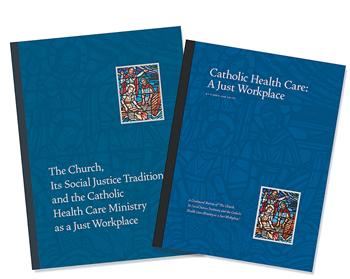 As early as 2008, CHA had convened a task force of theologians, ethicists and Catholic health care leaders to examine their organizational cultures in the context of principles of Catholic social teaching. The result was a 2012 booklet titled "The Church, Its Social Justice Tradition and the Catholic Health Ministry as a Just Workplace." Included among its topics was the often contentious role of employee unions in Catholic health care. The document noted that Catholic social teaching holds that unions may be essential for preserving the dignity of workers and securing the common good.
As early as 2008, CHA had convened a task force of theologians, ethicists and Catholic health care leaders to examine their organizational cultures in the context of principles of Catholic social teaching. The result was a 2012 booklet titled "The Church, Its Social Justice Tradition and the Catholic Health Ministry as a Just Workplace." Included among its topics was the often contentious role of employee unions in Catholic health care. The document noted that Catholic social teaching holds that unions may be essential for preserving the dignity of workers and securing the common good.
Interpreting the moral principle of cooperation as applied to collaborative arrangements has become increasingly important and difficult. In the summer of 2014, CHA formed a task force to analyze the Principles for Collaboration, developed by CHA in conjunction with the Vatican and the United States Conference of Catholic Bishops. Around the same time, the USCCB announced its intention to revisit the section on cooperation in the Ethical and Religious Directives. CHA leaders promised to work closely with church officials studying the matter and to keep members informed.
UNFINISHED WORK ON HEALTH REFORM
CHA continued to rejoice over passage of the Affordable Care Act and the fact that 20 million formerly uninsured Americans were now receiving coverage — including more than 11 million enrolled in private health insurance through new health insurance marketplaces. But the work was not finished. The public had been deeply divided over the Affordable Care Act before it became law and, once it did, its opponents did not disappear. Proponents of the ACA pointed out that divisions were similar to those that threatened passage of Medicare in 1965 — a program that in time became hugely popular with the American public.
In the first four years after passage of the ACA, there were nearly 50 unsuccessful efforts in Congress to repeal it, along with ongoing court challenges. The most significant of those through 2014 culminated in a U.S. Supreme Court decision that the law's "individual mandate," i.e., the requirement that most Americans purchase health insurance or face a penalty, was constitutional. In that same decision, however, the court struck down a requirement for states to expand Medicaid with federal subsidies. This was a huge disappointment to CHA, which had filed an amicus brief in the case. The court's decision meant that millions of very low-income Americans who would have been eligible for Medicaid coverage under the original law now would remain uninsured. As of February 2015, 29 states had expanded Medicaid, 19 had not and three were considering expansion.
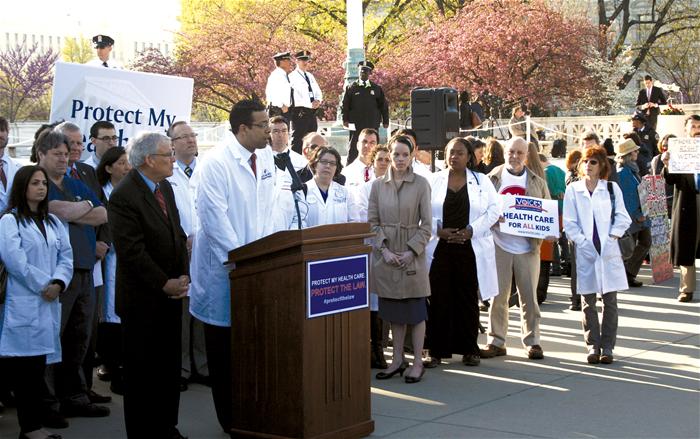
Facing down the challenges, working to increase legislative support and countering the ubiquitous misinformation campaigns demanded tireless energy on the part of CHA's advocacy staff and others determined to ensure the future of the ACA and also to gradually extend coverage to all Americans, including undocumented immigrants. Sr. Carol Keehan, DC, CHA's president and chief executive officer, and CHA's advocacy and communications staff continued to urge association members to focus on the significant benefits of the law, to redouble efforts to ensure adequate funding for its future, to help eligible Americans enroll in the new insurance plans and — until the day when all Americans are meaningfully insured — to push for improvements to the ACA and for Medicaid expansion in all states.
In a column in the April 15, 2014, issue of Catholic Health World, Sr. Keehan wrote, "CHA pledges to continue to work with all people of good will to improve the provisions and functionality of this law. We have always known that the Affordable Care Act, like other laws, is not perfect, but is a real start on the road to health security for millions of people. … We have much to do to improve and expand the impact of this law, but we have seen the tangible good it has done already and will be there to share our concern and suggestions as our nation builds on this achievement."
BYLAWS REVIEW FOR CHANGING TIMES
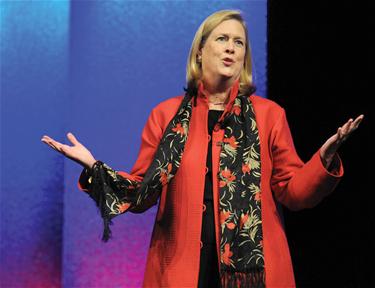
The year 2011 marked the beginning of an intensive process to consider potential changes in CHA membership criteria. It was the first instance of membership review since 1998, when CHA, in response to the widespread formation of Catholic health systems, revised its bylaws so that those systems, rather than the hospitals in the systems, would be the voting members of CHA.
Except for a brief period between 1993 and 1995 when the bylaws allowed for-profit Catholic members, CHA's bylaws have required voting CHA members to be both recognized as Catholic by the applicable diocesan bishop and to be nonprofit entities. However, in 2011 and 2012, two CHA voting members changed their status such that they no longer fit these bylaw requirements. The first of these, Caritas Christi Health Care was sold to a for-profit organization (becoming Steward Health), but remained Catholic as designated by the Cardinal Archbishop of Boston. The second organization, Catholic Healthcare West (renamed Dignity Health), was reorganized as a secular system that included both Catholic and secular hospitals.
In response to these changes, the CHA Board of Trustees determined that CHA should undertake a study of whether the bylaws should be changed to allow organizations such as these to remain voting members of CHA. In 2012, the bylaws were amended to permit organizations that had changed their structures, such as Steward Health and Dignity Health, to remain CHA members during the study period.
The board appointed M. Colleen Scanlon, former CHA board chair, to lead a task force to undertake a three-year discernment process to study these issues and determine whether to recommend a set of amended bylaws to the CHA board.
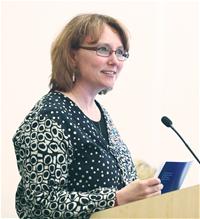
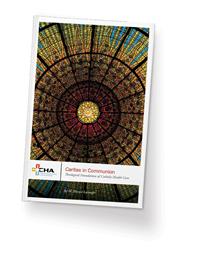 The task force (later reorganized as a CHA board committee) first focused on the theological foundations of Catholic health care. To ground its own work and help the ministry's leaders explore the questions, the committee asked noted theologian M. Therese Lysaught, PhD, to develop a white paper to serve as an ongoing reference. The white paper, titled Caritas in Communion: Theological Foundations of Catholic Health Care, was issued after a year of research, reflection and feedback from scholars and theologians, both inside and outside of CHA. Once the paper was accepted by the board, an official 12-page summary was made available on CHA's website. In a 2012 presentation at the Catholic Health Assembly, Lysaught said that whether the new structures were compatible with Catholic identity was not answered simply with yes or no, but how. Both Catholic social teaching and commitment to the common good require Catholic health care to develop "profoundly new ways of understanding the health care enterprise."
The task force (later reorganized as a CHA board committee) first focused on the theological foundations of Catholic health care. To ground its own work and help the ministry's leaders explore the questions, the committee asked noted theologian M. Therese Lysaught, PhD, to develop a white paper to serve as an ongoing reference. The white paper, titled Caritas in Communion: Theological Foundations of Catholic Health Care, was issued after a year of research, reflection and feedback from scholars and theologians, both inside and outside of CHA. Once the paper was accepted by the board, an official 12-page summary was made available on CHA's website. In a 2012 presentation at the Catholic Health Assembly, Lysaught said that whether the new structures were compatible with Catholic identity was not answered simply with yes or no, but how. Both Catholic social teaching and commitment to the common good require Catholic health care to develop "profoundly new ways of understanding the health care enterprise."
In the second year of its three-year discernment process, the committee conducted interviews with leaders of CHA member organizations that no longer fit the current membership criteria, and collected ongoing input from other CHA members, as well. The third year of the committee's work was focused on submitting a recommendation on CHA's membership criteria to the CHA board for approval.
CHA GOES INTERNATIONAL
CHA and its member organizations had long been responsive to medical needs of people in developing nations. In order to intensify and coordinate efforts to meet those needs, CHA decided in 2009 to create a new staff position. Bruce Compton, an expert in international aid who had lived and worked in Haiti, was hired in April 2010 as CHA's first senior director of international outreach.
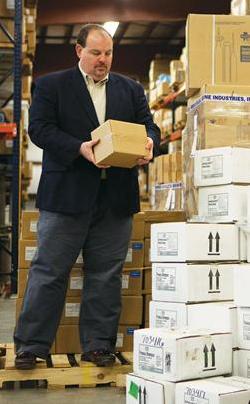
Meanwhile, a devastating earthquake in Haiti in January 2010 created a massive health care crisis in that country and an intensified desire to reach out with aid. In the United States, CHA member hospitals and their staffs were among the first wave of emergency responders. Systems poured cash into the global relief effort and offered donations of surplus medical equipment and supplies.
"Our ministries have pulled out all the stops to say, ‘What can we do? What more can we do?'" said Sr. Keehan.
Among Compton's first assignments was to enhance collaboration among CHA members and others engaged in medical outreach to areas in the developing world, including Haiti. An initial key goal was to maximize the impact of relief by working with health care organizations and surplus recovery organizations to better assess needs and evaluate, sort, process and distribute surplus goods.
The first steps for CHA's new office included sponsoring annual "global summits," held in conjunction with the CHA Assemblies, starting in 2011. These gatherings featured experts on overseas aid representing major organizations in the field, such as Catholic Relief Services and the World Health Organization. Related activities over the next four years included research and reports, ongoing educational programs and creation of a formal network aimed at aligning resources.
Based on research and interviews with Catholic health care partners and outside experts, CHA's international office published in 2013 a booklet titled Responsible Redistribution of Medical Supplies and Equipment: Leading Practices for Hospitals and Health Systems.
In 2014, CHA issued a research-based report on short-term medical mission trips. Noting a dramatic increase over the past two decades in the number of such trips — intended to provide health services to poor people overseas as well as to enhance personal and professional formation — the report urged a thoughtful conversation about how to assess and enhance benefits to the people the trips intended to serve.
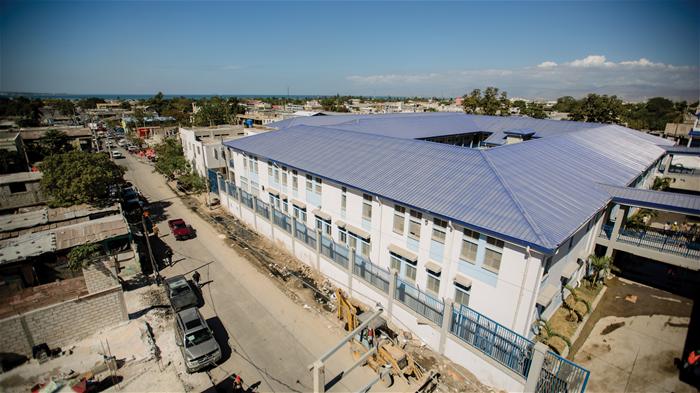
These early stages of the association's stepped-up efforts to better coordinate overseas relief also included rebuilding the Hospital St. Francis de Sales in Port-au-Prince, Haiti, which had been destroyed in the 2010 earthquake. The association and its members had contributed more than $10 million in support of the building campaign. The new hospital was dedicated on January 15, 2015, five years after the earthquake.
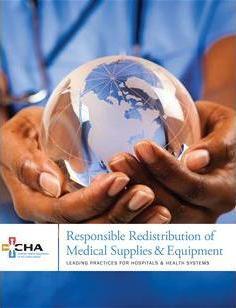 Sr. Keehan, a participant at the dedication, described the outpouring of support for the project as a tangible expression of Catholic health care's mission to serve the poor and vulnerable. In a letter to CHA members, she said: "This is a celebration and a milestone for the members of the Catholic Health Association of the United States. Our members are U.S. health care organizations who share with St. Francis de Sales Hospital the commitment to continuing Jesus' mission of caring for and healing the sick and injured, the young and the aged, expectant mothers and newborn babies, and particularly, those who are poor and in great need."
Sr. Keehan, a participant at the dedication, described the outpouring of support for the project as a tangible expression of Catholic health care's mission to serve the poor and vulnerable. In a letter to CHA members, she said: "This is a celebration and a milestone for the members of the Catholic Health Association of the United States. Our members are U.S. health care organizations who share with St. Francis de Sales Hospital the commitment to continuing Jesus' mission of caring for and healing the sick and injured, the young and the aged, expectant mothers and newborn babies, and particularly, those who are poor and in great need."
INTO THE FUTURE
In the early years of the 21st century, CHA began intensifying educational efforts in a variety of areas. These included climate change and dealing with the impact of weather-related disasters; increasingly dangerous strains of bacteria, sometimes referred to as "superbugs"; and ongoing threats of disease breakouts of pandemic proportions. Such concerns, in addition to the financial and medical pressures to reform the health care delivery system, increasingly competitive relationships with physicians, disparities of care and the rising number of people without health insurance, challenged not just the Catholic ministry, but all of health care. Advances that offered new possibilities for healing, but also raised ethical concerns, included robotic medicine, telemedicine, genetic therapies and stem cell research. Persistent campaigns to legalize euthanasia increased Catholic health care's advocacy to promote compassionate care at end of life, especially in terms of palliative care.
CHA continues to strengthen its ties with the Vatican and U.S. Catholic bishops to deepen mutual understanding of the ways in which Catholic health care strives to remain true to its values and to strengthen its presence in negotiating the pressures it faces.
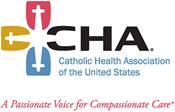
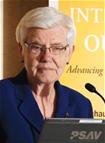
One of many hopeful signs over the past 25 years is the way Catholic health care has survived and thrived through difficult times and continues to build on its historic traditions. Sr. Doris Gottemoeller, RSM, one of Catholic health care's guiding lights in her many years of service, said in a visionary address in 2013 that Catholic health care — in its ability to shift from vowed religious to lay leadership, in its faithfulness in embodying the values of respect for human dignity and justice, and in its successful efforts to build strong ecumenical and interfaith environments — had become "a community of practice" for implementing the vision of the Second Vatican Council. Her talk was published in the July-August 2013 issue of Health Progress.
"We can't claim we get it right all of the time," she said. "But the vision is still out before us. … The Second Vatican Council itself was an expression of tradition in action: change and development in the church's teachings with fidelity to the Gospel entrusted to us. Catholic health care demonstrates that change within a fundamental continuity of mission."
In its hundredth year, the association and its members can celebrate the clear meaning of her words: By remaining faithful to essential core values, Catholic health care could move into the future from a strong position of undeniable accomplishments, taking justifiable pride in a continuous future-oriented tradition as a passionate voice for compassionate care.
PAMELA SCHAEFFER is a former editor of Health Progress.
INTENSIFIED FOCUS ON ELDER CARE
Against that backdrop, and with health reform on the horizon, CHA convened a group of concerned specialists in 2008 to respond to member requests for a stronger strategy for the future of senior care. In 2009, an internal study of CHA members determined that more than 800 facilities provided services exclusively for the elderly along a continuum of care, ranging from residences for independent seniors to assisted living and long-term care facilities. Nearly 80 percent were affiliated with a Catholic health care system; most of the other 20 percent were freestanding facilities under Catholic sponsorship. Touchstones for the future of CHA's resources for care of the elderly included several visionary examples: a substantive booklet from the 1980s, "A Time to Be Old, A Time To Flourish: The Special Needs of the Elderly-At Risk," and a resource-rich packet published in 1997, "Serving Aging and Chronically Ill Persons" and containing a series of booklets to guide long-term care organizations. Working with experts in care for the elderly, CHA had by the early 1990s developed a vision of coordinated delivery of services focusing on a full continuum of care, beginning with preventive care, and calling for a more efficient use of funds. The vision was laid out in a 1995 publication, A Workbook on Long-term Care and Integrated Delivery for Seniors, and another in 2000, Integrating Long-term Care, Acute Care and Housing. 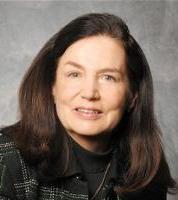 Julie Trocchio The call in mid-2008 for more strategic focus resulted in a number of noteworthy initiatives. These included a CHA-sponsored conference in 2010, "Catholic Health Strategy Summit: Integrating Services for Seniors," to explore innovative practices in person-centered, integrated care in the context of health reform. Numerous new resources were developed, the first of which was a booklet, "Catholic Eldercare: A Life-Giving Experience," inviting reflection by administrators, board members, staff and caregivers on Catholic health care's sacred obligation to uphold the dignity of the frail elderly. Next, CHA commissioned Howard Gleckman, journalist, author and resident fellow at the Urban Institute, to develop three papers – one on integrated care, one on long-term care's role in reducing hospital readmissions, and one on implications for long-term facilities of Medicaid managed care. Additionally, CHA's multipronged approach to keeping a sharp focus on elder care included increased coverage of elder care issues in CHA publications, webinars and assembly programs, such as an annual pre-Assembly program on issues in elder care, held in partnership with the Avila Institute of Gerontology. With no change in sight in the growing population of older Americans, the focus on finding creative ways to meet the needs of the elderly while controlling costs is likely to be on CHA's radar for years to come. Julie Trocchio, CHA's senior director of community benefit and continuing care, has long been at the forefront of the ministry's concern for senior care. She introduced the theme "New Directions in Senior Care" in the September-October 2012 issue of Health Progress, noting that key priorities include high-quality, compassionate, person-centered care, keeping seniors at home and out of hospitals as long as possible and helping people live life to the fullest at every stage. "Our earliest ministries were characterized by high degrees of creativity and resourcefulness in order to meet the needs of their times … and that spirit is still with us," she wrote. |

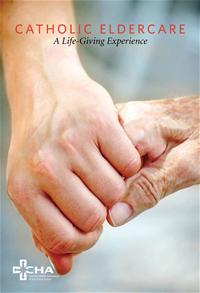 Catholic health care has long cared for the frail elderly as part of its mission. By 1990, CHA could count hundreds of high-quality long-term care facilities among its members, including those that were part of a larger, acute-care focused Catholic system and freestanding facilities sponsored by single religious congregations. However, as the population group known as the "baby boomers" began moving into their senior years, health care organizations took note of a profound and imminent impact on their resources. Experts estimated that by 2030, there would be 70 million Americans over the age of 65, half of them living with multiple chronic diseases. Those conditions would strain hospitals and long-term care facilities to provide the quantity and quality of care needed.
Catholic health care has long cared for the frail elderly as part of its mission. By 1990, CHA could count hundreds of high-quality long-term care facilities among its members, including those that were part of a larger, acute-care focused Catholic system and freestanding facilities sponsored by single religious congregations. However, as the population group known as the "baby boomers" began moving into their senior years, health care organizations took note of a profound and imminent impact on their resources. Experts estimated that by 2030, there would be 70 million Americans over the age of 65, half of them living with multiple chronic diseases. Those conditions would strain hospitals and long-term care facilities to provide the quantity and quality of care needed.